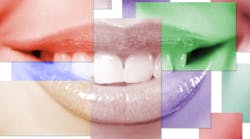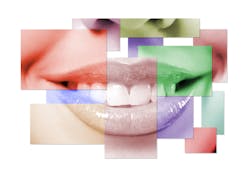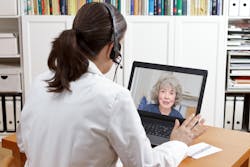As dental hygienists, our profession is undergoing significant changes. But that's nothing new, you might say. Since its inception, dental hygiene has been about change. Dental hygienists are a high-energy, talented, and intelligent group of people. Change and innovation are in our psyche!
Over time, our profession has moved forward. We've discovered new tools, such as lasers, to help us be more efficient and more effective. One of the newest tools in our arsenal is teledentistry. In this article, we'll look at what teledentistry is, how it's being used, and where dental hygienists like you could take it in the future.
What is teledentistry?
Wikipedia defines teledentistry as "the use of information technology and telecommunications for dental care, consultation, education, and public awareness." Teledentistry is making a name for itself because it's helping dental professionals perform specialty work. It also has the potential to reduce oral health disparities.
What are the advantages of teledentisry?
Some of the advantages of teledentistry are as follows:
- Reaching underserved populations—For example, teledentistry can help reduce oral health disparities between urban and rural communities.
- Removing socioeconomic disparities—Teledentistry can be used to reduce oral health disparities among socioeconomic populations, such as in urban areas.
- Improving specialty care—Teledentistry can help specialists consult with larger populations.
- Decreasing cost—Teledentistry can lower the overall cost of dentistry.
- Improving oral-systemic care—Teledentistry can promote the integration of dentistry into the larger health-care system. It can help change the concept that oral health is separate from overall health.
Origins of teledentistry
In 1994, the US Department of Defense launched a teledentistry program called Total Dental Access. It emerged from a project that aimed to improve patient care, increase dental education, and promote communication between dentists and labs. The project reduced total patient care costs and provided dental care to remote areas.
Teledentistry today
The American Dental Association recently created codes to be used for reimbursement when employing teledentistry. Those codes went into effect in January 2018. This is certain proof that teledentistry is part of the future of both dentistry and dental hygiene.
It will be the responsibility of both hygienists and dentists to tap their creativity and find appropriate uses of teledentistry for their practices. Dentists and hygienists can also find new ways to advance the dental profession—be it in education, public health, research, or elsewhere.
Just like many things in dentistry, each state is proceeding with teledentistry according to its own laws and regulations. As dentists and hygienists make decisions on how to integrate teledentistry into their practices, they will be responsible for complying with the laws and regulations for the states in which they practice. Your state dental board is the best source of information on the legal and ethical considerations for using teledentistry in your area.
What technology is needed for teledentistry?
There are different technologies utilized in teledentistry. These can include the following:
- Hardware and software—Each operator uses a computer or tablet with a means of HIPAA-compliant communication software.
- Imaging—Intraoral cameras and portable x-ray devices (e.g., a Nomad) capture images for transmission.
- Internet access—This is required for both the patient and dental professional.
Potential uses of teledentistry
There are many potential uses for teledentistry, which are given in the list below. Be aware that this list is not meant to limit you, but rather to spark your imagination and creativity.
Potential uses for teledenistry are as follows:
- In rural health and mobile vans that reach underserved populations, such as migrant workers, lower socioeconomic areas of large cities, and indigenous populations
- In school health programs
- At senior citizen centers and nursing homes
- By dental hygienists in independent practice
- For oral cancer screenings
- For research projects
- For interdisciplinary health care, such a dentist and medical doctor collaborating
- In collection of data in emergency rooms. For example, one could research how many patients present with dental problems, and this information could be used to seek funding for a teledentistry system that would help direct patients to dental resources.
- Education
In this list, education is purposely saved for last because it has many possibilities. These include the following:
- Providing continuing education and oral health education to remote areas
- Use in schools and student portfolios
- As a means of critiquing and tracking improvement of dental students' clinical work
- Supplementing teaching methods in the classroom
In the future, teledentistry will need to be taught in each school's cirriculum. Teledentistry will be a useful tool in the practice of dentistry just as any other tool is, such as anesthesia.
Teledentisry is in your hands
As you processes this information, the next step is hands-on action. Locate a school or clinic currently employing teledentistry in some way. Perhaps you can find a continuing education course on teledentistry or make it a point at your next dental conference visit to find a teledentistry booth. Find out its capabilities, then imagine its possibilities. You could take this next big innovation to Antarctica, a flight into space, or an underserved population near you. As a dental hygienist, the possibilities you can imagine are endless!
Sources
- Wikipedia. Teledentistry. https://en.wikipedia.org/wiki/Teledentistry.
- DentaQuest Institute Interprofessional Practice white paper. April 2017.
- Clark GT. Teledentistry: What is it now and what will it be tomorrow? Journal of the California Dental Association. 2000.
- Teledentistry Shows Potential to Assist Rural Communities. NIH. December 2008.
- Rocca MA, Kudryk VL, Pajak JC, Morris T. The Evolution of Teledentistry within the Department of Defense. 1999.
- Jampani ND, Nutalapati R, Dontula BS, Boyapati R. Applications of teledentistry: A literature review and update. J Int Soc Prev Community Dent. July 2011.
- Marino R, Ghamin A. Teledentistry: a systematic review of the literature. J Telemed Telecare. June 2013.
- Khan SA, Omar H. Teledentistry in Practice: A Literature Review. Telemed J E Health. July 2013.
- Estai M, Kanagasingam Y, Tennant M, Bunt S. A systematic review of the research evidence for the benefits of teledentistry. J Telemed Telecare. January 2017.
- Daniel SJ, Wu L, Kumar S. Teledentistry: a systemic review of the clinical outcomes, utilization and costs. J Dent Hyg. December 2013.
- Daniel SJ. Wu L, Kumar S. Teledentistry: A key component in access to care. J Evidence Based Dent Pract. June 2014.
- Estai M, Bunt S, Kanagasingam Y, Kruger E, Tennant M. Diagnostic accuracy of teledentistry in the detection of caries: a systemic review. J Evidence Based Dent Prac. September 2016.
- Irving M, Stewart R, Spallek H, Blinkhorn A. Using teledentistry in clinical practice, an enabler to improve access to oral health care: a qualitative systemic review. J Telemed Telecare. January 2017.








